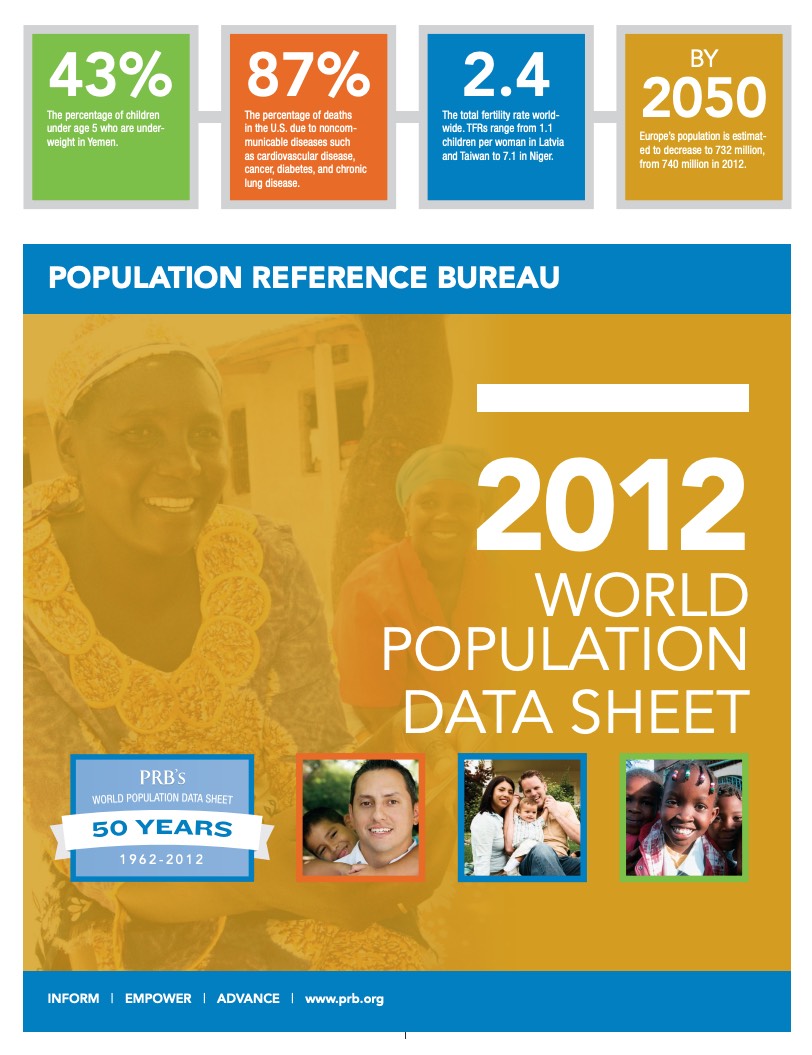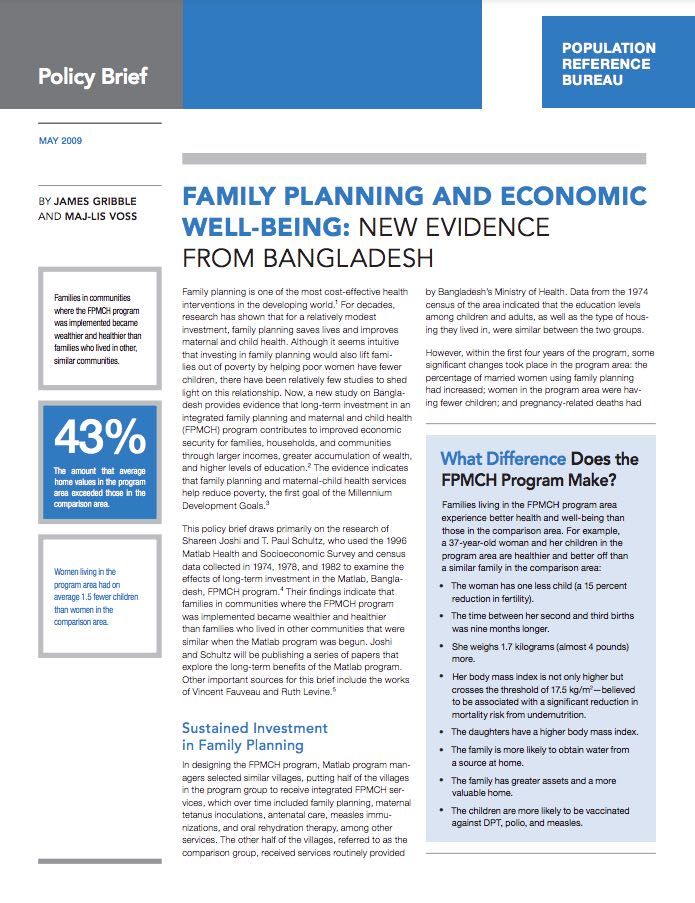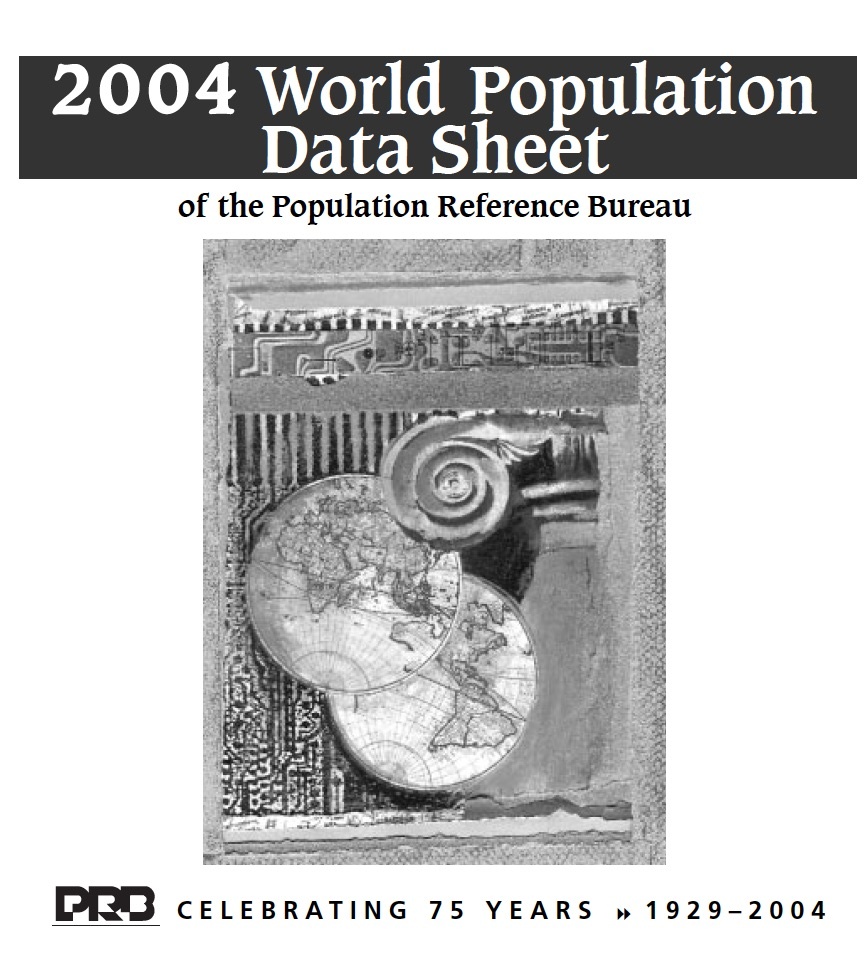2012 World Population Data Sheet
Nearly all future population growth will be in the world's less developed countries, and the poorest of these countries will see the greatest percentage increase.

Nearly all future population growth will be in the world's less developed countries, and the poorest of these countries will see the greatest percentage increase.
(2005) As the United States population becomes ever more diverse, are more people dating across race lines? The question isn't simply a matter of whom you'll be going out with on Saturday night. Since interracial dating (or "interdating") and interracial marriage were outlawed or ostracized for so long in U.S. history, many sociologists see the incidence of these relationships as a key indicator of the state of U.S. race relations.

(2009) Family planning is one of the most cost-effective health interventions in the developing world. For decades, research has shown that for a relatively modest investment, family planning saves lives and improves maternal and child health.

(2004) The starkly uneven pace of population growth between most developing and industrialized nations represents the world's major demographic fault line. The Population Reference Bureau's just-released 2004 World Population Data Sheet demonstrates that nearly 99 percent of all population increase takes place in poor countries, while population size is static or declining in the rich nations.